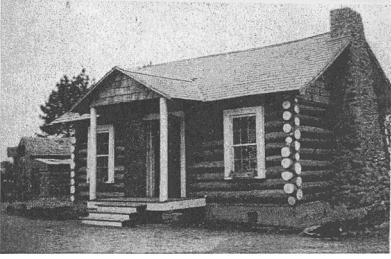Willie Lee Buffington was born in 1908 to parents Mose and Lizzie Buffington. He came from a poor family, but was still able to complete the local school near his home at the age of 16. Willie was then sent to Martha Berry Schools in Rome, Georgia. He would spend the next two years there. While at Berry, Willie’s father had a crop failure that forced both Willie and his father into the cotton mills. Soon after the first Faith Cabin Library was established, Buffington decided to continue with his education by completing his high school degree. It took him two years to complete this degree as he worked during the day and took classes at night. After high school, he was admitted to Furman University and would then go on to graduate from Crozer Theological Seminary. Mr. Buffington would open over 100 Faith Cabin Libraries throughout his life. He died in 1988.
Faith Cabin Libraries

What is a Faith Cabin Library?

A Faith Cabin Library was the name of the first log cabin library built in Saluda County, South Carolina. Mr. E.W Simpkins as the principal of the local African American school, had led a campaign to built a new school for the African American children in the area. Mr. Simpkins invited Mr. Willie Lee Buffington to the dedication of the new school. Buffington discovered to his dismay that there were no books in this new school for his “Negro neighbors” as he called them. Buffington was without money to buy books himself, but he did buy five two cent stamps to write letters to five people that he believed could donate books to the school. Only one letter was returned. Reverend L.H King of St. Mark’s Methodist Church in Harlem, New York. King, himself an African American, presented Buffington’s plea to his congregation and was able to send 1,000 books to South Carolina within two months. Having little room to store so many books in the newly built school, many were placed in the local church and from there it was decided to build a library to house the multitude of books. Despite being in the midst of the Depression, a library was built by asking land owners for trees and those who had the means to haul the logs to the sawmill to do so. In 1932, when the people who had built the 18 by 22 feet library gathered to thank God for the library, they saw the need to name the building. An elderly woman stood and said, “We didn’t have anything to go on but faith. Let’s call it ‘Faith Cabin Library.’”